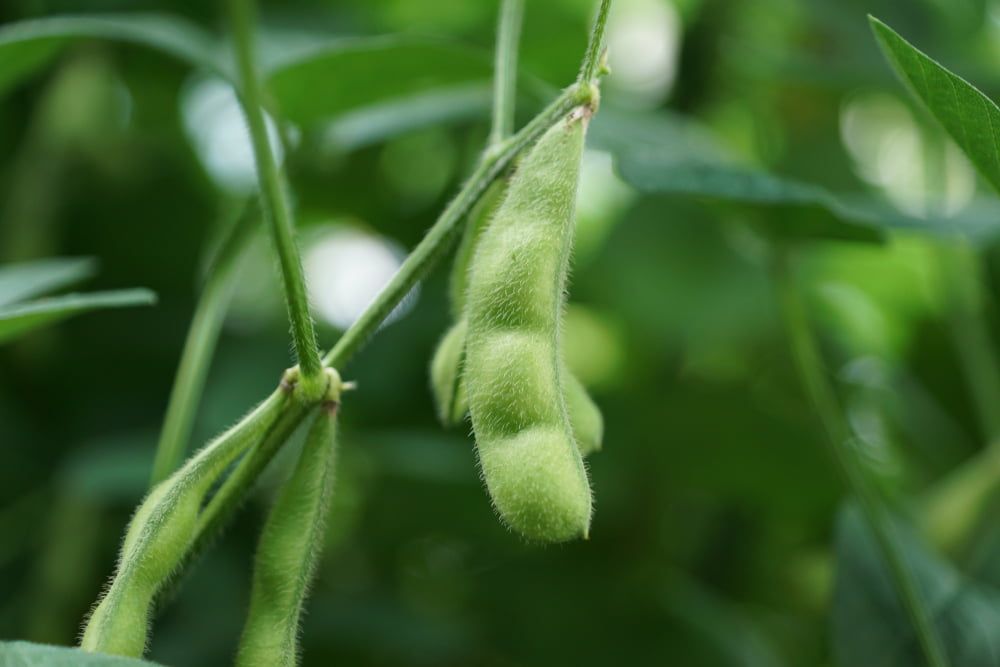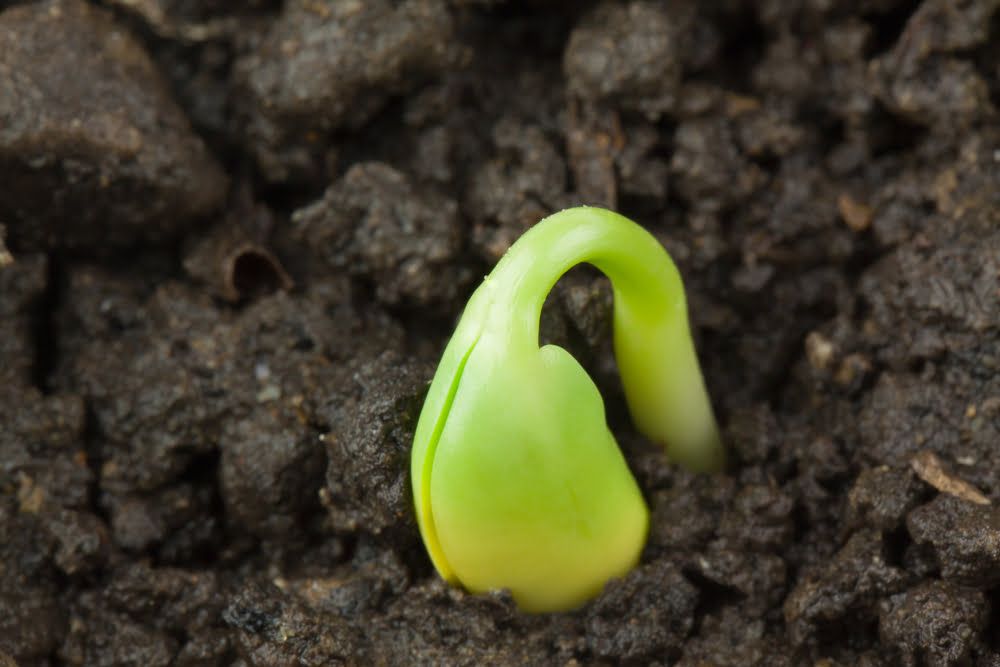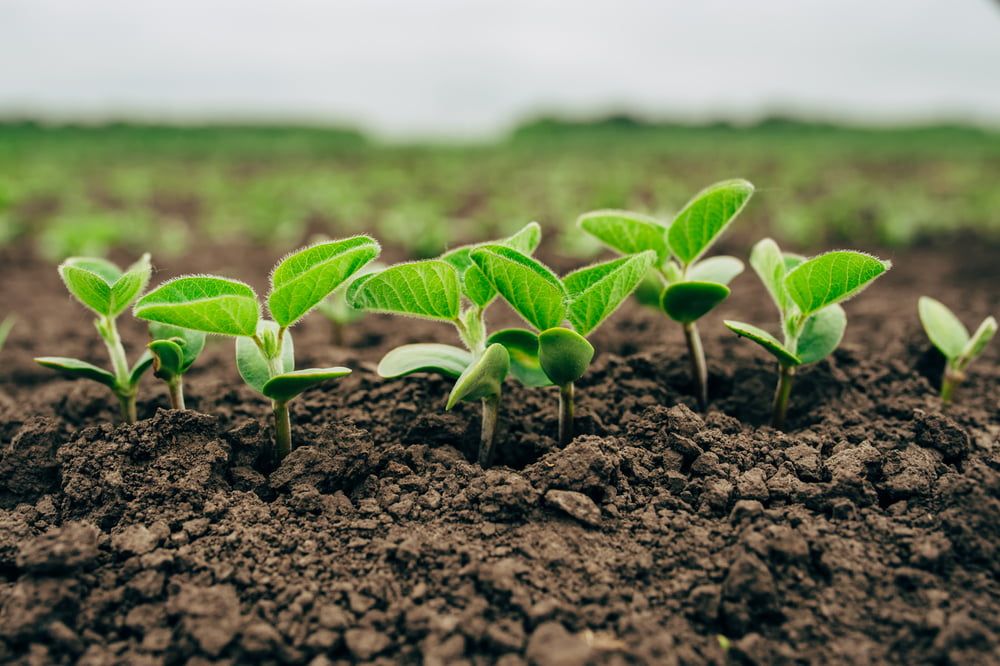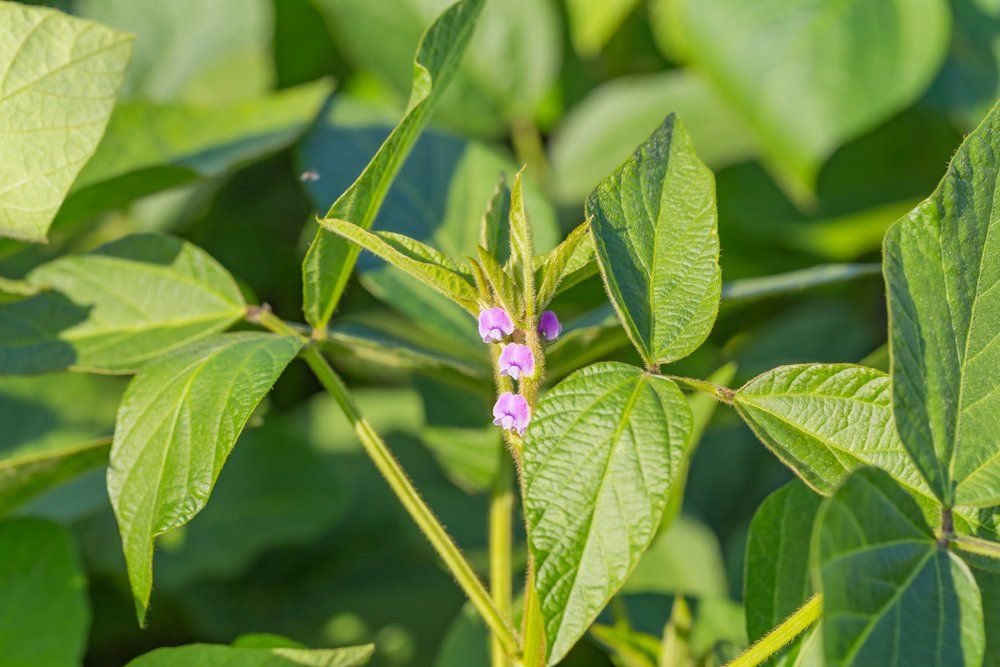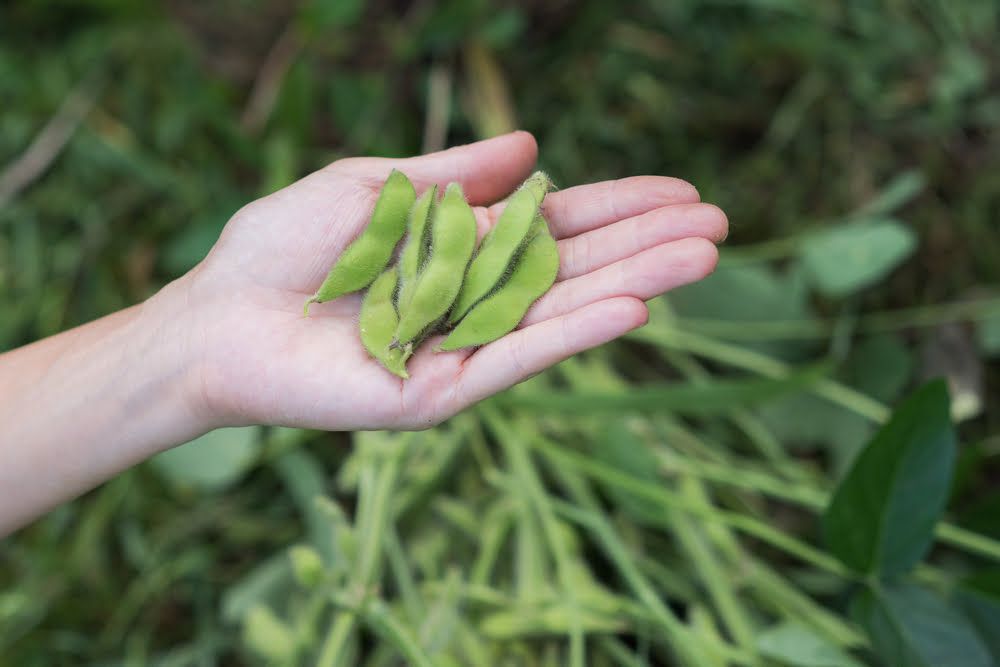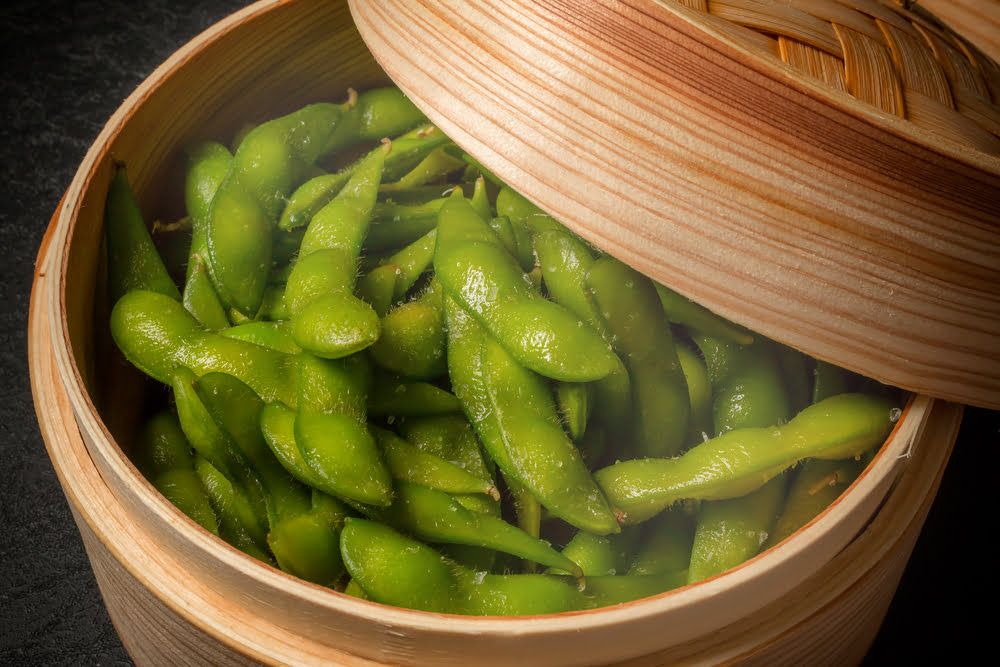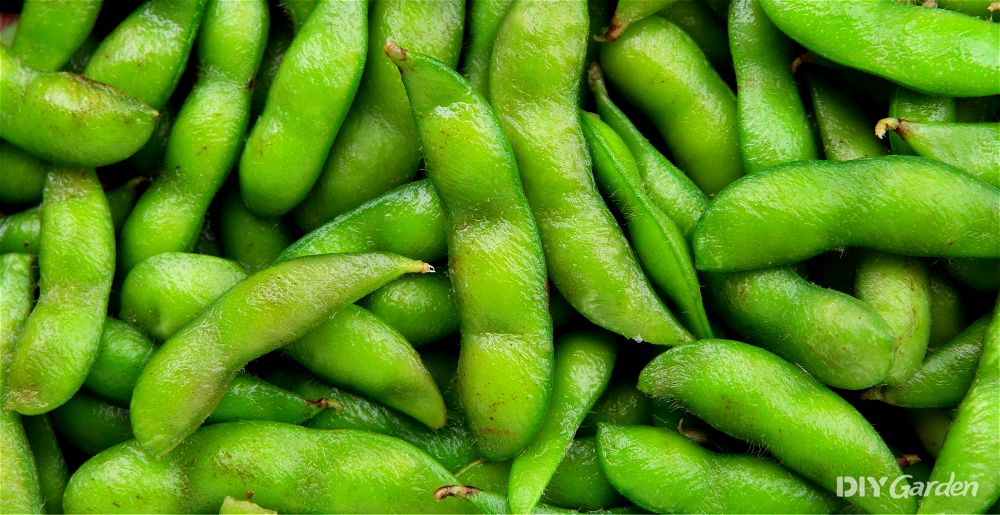
If you’re a fan of Japanese food and other East Asian cuisines, then you’ve likely come across edamame beans before. Nutty, buttery, and subtly sweet, these beans offer just the right amount of bite to make them satisfyingly addictive. Even better, with new varieties now available, gardeners all over the world can grow their own edamame beans at home, enabling them to produce their own source of the only vegetable in the world that contains all nine essential amino acids.
Growing Edamame: A Quick Snapshot
When to Sow – Apr-Jun
When to Plant – Jun-Jul
When to Harvest – Aug-Oct
Average Yield per Plant – 50g
Spacing – 20-40cm
Depth – 2.5cm
How to Grow Edamame at Home
Edamame beans are also known as soybeans. The difference is that edamame is picked while the beans are still young, green, and deliciously tender, while soybeans are the mature and drier version.
Soybeans are typically grown in warmer climates, since they need a long, hot summer to mature. However, since edamame beans are picked earlier, they only need between 90-150 frost-free growing days, making them a crop option for gardeners all over the world.
Growing Requirements for Edamame Beans
Edamame plants need full sun, meaning at least six hours of sun a day. While the plants will still grow in partial shade, this will significantly affect pod production, meaning lower yields.
Warm temperatures are also key for growing edamame. Ideally, you want to give your plants a minimum of 18°C during their growing season.
Edamame plants do best when their soil is well-draining and slightly acidic. Mixing some compost in can help to provide nutrients early on in the growing season, while also improving drainage.
How to Grow Edamame from Seed
If you live in a warm climate, you can direct sow edamame outdoors in late spring. Gardeners in colder climates should start their seeds off indoors, before moving their seedlings outside once temperatures rise in early summer.
How to Sow Edamame Seeds in Modules:
- Fill module trays with a multi-purpose compost
- Water the trays well, ensuring that excess water is able to drain freely from the bottom. Remember that good drainage is key for successfully growing edamame beans
- Make a small indentation in the centre of each module, about 2.5cm deep
- Place an edamame seed into each indentation and then cover back over with soil
- Place your trays somewhere warm. Edamame beans won’t germinate when temperatures are below 15°C. That said, you’ll experience the best germination rates if you can give your seeds temperatures of around 21°C, making a heated propagator useful
It will take between one to two weeks for your edamame seeds to germinate. Once they do, move them somewhere bright and warm, making sure that you’re giving them plenty of water. Continue to grow them on indoors until you’ve had your last spring frost. If your seedlings outgrow their modules, then you’ll need to transplant them into larger pots before planting them out.
How to Direct Sow Edamame Seeds:
- Prepare your growing area by thoroughly weeding it and mixing in some compost to improve drainage
- Create furrows in the ground that are about 2.5cm deep. Since edamame plants turn quite bushy, space each row at least 40cm apart. The more space you give your plants, the higher your yields will be, so don’t be tempted to cram them all into a small area
- Sow your seeds thinly, aiming for about 5-10cm of space in between each one. You’ll still need to thin them out later on
- Cover your seeds with soil
- If your growing area was dry, water it thoroughly
Again, it’ll take a couple of weeks for your edamame seeds to germinate. Once they’re about 10cm tall, thin them to their final spacing, leaving at least 20cm between each plant.
How to Plant Edamame Outside
Not only do you need to wait until you’ve had your last spring frost before planting your edamame seedlings outside, but, ideally, give them an extra couple of weeks so that the soil can really warm up.
Here’s how to plant your edamame seedlings out:
- Dig small holes in the ground that are just slightly larger than the root balls of your seedlings
- Gently ease your seedlings out of their modules and place them into their new homes
- Cover the roots over with soil and firm down gently
- Water well after planting, ensuring that the roots get a good soak
How to Plant Edamame in a Greenhouse
If you live in a cooler climate, then edamame is a great crop for growing in a greenhouse. The extra heat and protection that a greenhouse provides will increase your yields in a big way.
Follow the same planting methods as when planting outside. The only difference is that you may want to give your plants a little more space to make up for the fact that a greenhouse has less air circulation than an outdoor environment.
If you don’t have enough room in your greenhouse beds for bushy edamame plants, then growing them in a container is another option. Although they do grow quite wide, edamame plants have a height of about 90cm at most, making them a good candidate for growing in pots. Pick a pot that’s at least 20cm deep and wide for maximum yields.
How to Care for Edamame
Just like other legumes, edamame plants are easy to care for. Give them the basics and they’ll pretty much look after themselves until they’re ready to be harvested.
Watering Edamame
Edamame plants need a regular supply of water throughout the growing season. Aim to provide between 2-3cm of water a week. Most importantly, make sure that those roots never dry out, especially once your plants are producing flowers and pods. Dry spells at this time will cause flowers to drop, pods to shrivel, and inhibit bean growth.
On the other hand, don’t over-water your edamame plants either. This makes them more susceptible to fungal diseases and prevents them from drawing up sufficient nutrients from the soil, therefore inhibiting growth.
Feeding Edamame
Like other legumes, edamame pulls up plenty of nitrogen from deep within the soil. So long as your soil was relatively balanced to begin with, your plants won’t need an additional fertiliser. If your soil isn’t good quality and you would like to give your plants a little boost, adding some well-rotted animal manure to the soil around your plants can help.
Weeding and Mulching Edamame
Once edamame plants start to bush out, they tend to smother any weeds growing around them. However, until they reach this stage, you’ll need to keep their growing area weed-free. Be careful when weeding – edamame roots are quite delicate, so you don’t want to end up damaging them while pulling out deeper-rooted weeds.
To cut back on the amount of time that you need to spend weeding, consider applying an organic mulch around your plants when planting them out. This will not only help to suppress the growth of weeds, but it will also retain moisture, improve soil quality, and keep your plants warmer, allowing you to extend your growing season.
How to Harvest Edamame
Depending on the variety that you’re growing, it usually takes around three to four months from sowing before edamame beans are ready to be picked. You’ll know that the time is right when the pods are about 5-8cm long, and you can see the plump beans within.
The pods are easy to pick – simply snap or snip them off from the plant, taking care not to damage the plant itself.
If you notice any yellow pods on your plants, then pick these too. Although they’re now a little over-ripe, the beans within can still be eaten. They’ll taste more like lima beans, rather than typical edamame.
At the end of the season, once you’ve harvested all of your edamame beans, leave the remaining plants to naturally die back into the soil. This way, they’ll release all of that extra nitrogen that they’ve gathered up over the season, which will give your soil a good boost of nutrients.
How to Store Edamame
Edamame beans taste best when eaten fresh (but not raw – more on this later). The fact that the pods mature at different times means that you won’t end up with an extremely big harvest all in one go, unless you’ve planted a high number of plants.
If short-term storage is what you need, simply place your beans into an airtight container and keep them in the fridge for up to a week.
For long-term, consider freezing your beans. Ideally, blanch them first, while they’re still in their pods, and then place into an airtight container in the freezer. They’ll retain their flavour and texture for at least one year.
Drying your edamame beans is another way to store them long-term. When done correctly and then stored in a cool and dry environment, they’ll be good to use for up to three years.
How to Prepare & Cook Edamame
No matter how much you’re tempted to pop a freshly picked and podded edamame bean into your mouth…don’t. Edamame beans are toxic when eaten raw, so should always be cooked first.
Fortunately, cooking edamame beans is easy. Boiling them in salted water for six minutes or so is all you need to do, before topping them with sea salt. Alternatively, try steaming them, or consider cooking up one of the following delicious edamame dishes:
- Edamame hummus
- Edamame and cucumber salad
- Sautéed edamame and sweetcorn
- Edamame and pea bruschetta
- Edamame and goat’s cheese dip
- Creamed edamame and onions
Common Edamame Problems
Since edamame is a legume, there are a few pests and diseases to keep an eye out for:
- Rust – this disease shows as spots on the leaves that darken in colour, possibly also spreading to stems and pods. Heat and humidity cause the disease to spread, so try to improve ventilation around your plants. Fungicides can help to curb an infection, and you may also want to consider rust-resistant varieties in the future
- Downy mildew – this is another fungal disease that’s prevalent in hot and humid conditions. Small yellow and green spots on the leaves will spread to form larger patches, and even though the pods may look fine, the beans within will likely be covered in a white mould. Look for resistant varieties in the future
- Spider mites – one of the most common edamame pests, these bugs feed on foliage, causing them to turn a bronze shade. An insecticidal soap can be sprayed onto the undersides of the leaves to clear an infestation
- Slugs and snails – in the same way that they’ll feast on your peas and beans, you’ll also find slugs and snails flocking to your edamame plants, leaving their silvery trail of slime behind. These pests can be manually picked off, or try setting some beer traps up around your plants
Popular Edamame Varieties to Grow
There are several edamame varieties out there, so pick the ones that are best suited to the length of your growing season:
- Midori Grant – an early variety that’s ready for harvesting in just 70 days, with larger pods and beans than any of the other early varieties
- Early Hachuko – another early variety, but this time a very compact plant, making it suitable for smaller spaces
- Shirofumi – a very high-yielding variety that produces over 100 pods per plant
- Sayamusume – loved for its jumbo-sized pods and beans
- Be Sweet – this is a late-maturing variety that, as you can tell from its name, is famous for its sweet and succulent beans
Conclusion
With so many fast-maturing varieties now available, people all over the world can finally grow productive edamame plants. Not only are these beans absolutely delicious, but they’re packed with protein and are easy to store long-term, making them a must-have in any edible garden.
